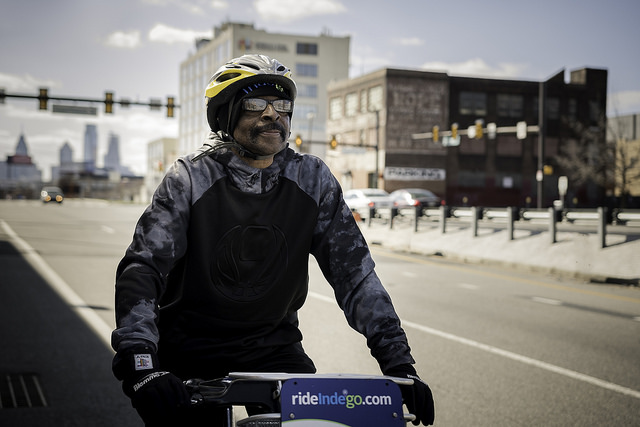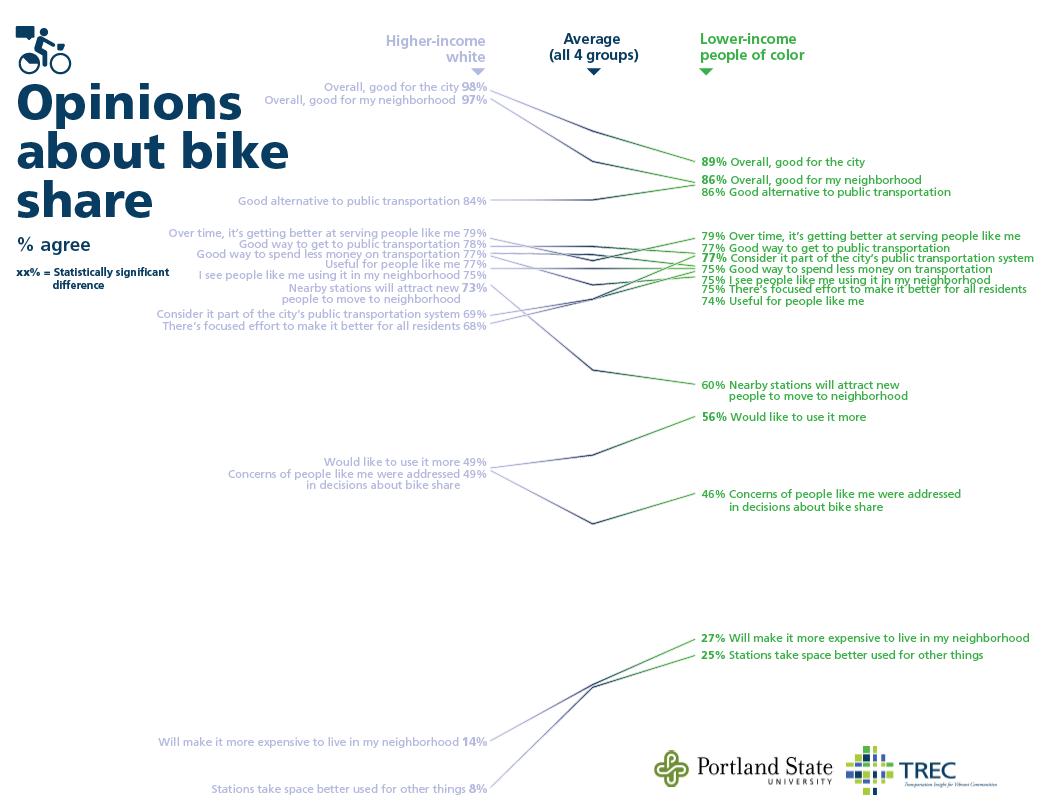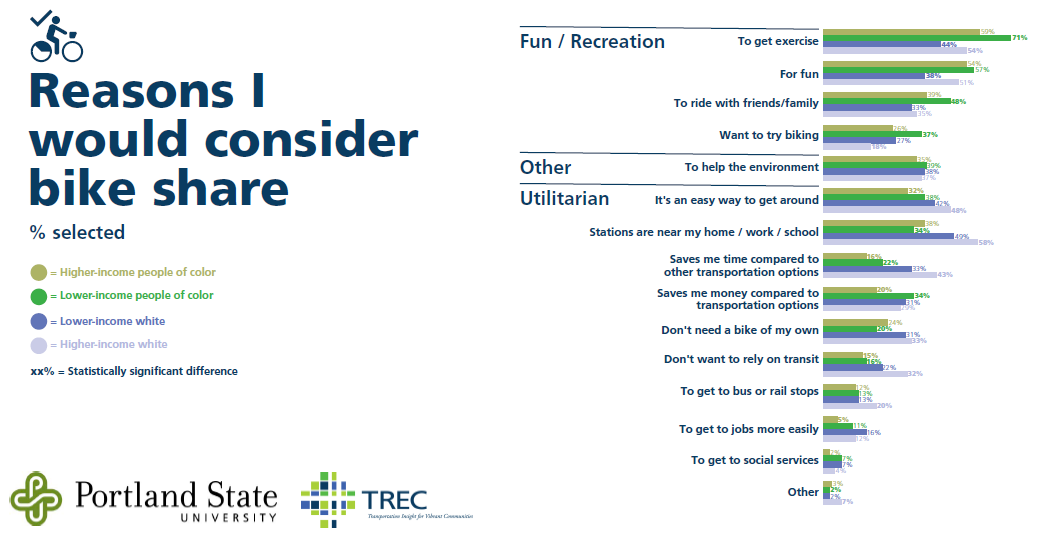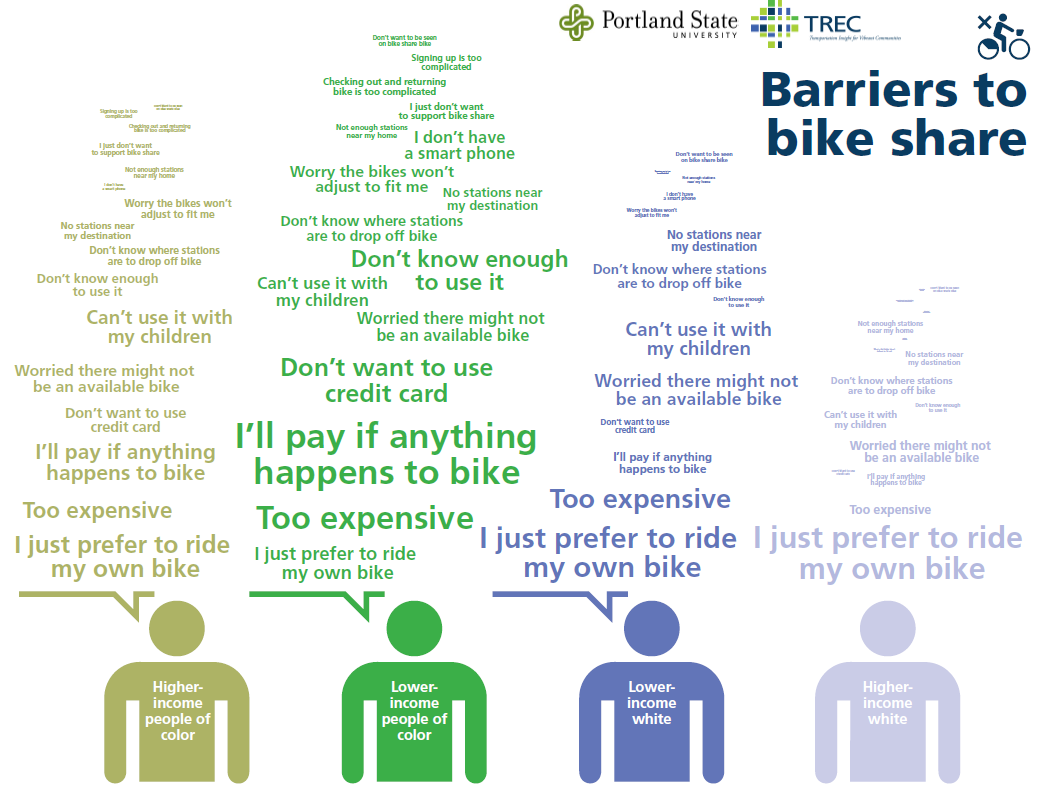Study from Portland State shows untapped potential for bike share
by Stefani Cox
August 31, 2017
This post is part of a series analyzing bike share research results from the Portland State University study “Evaluating Efforts to Improve the Equity of Bike Share Systems.”
We’ve known for years that bike share isn’t living up to its potential to serve all residents, but now the most rigorous study of equity and bike sharing shows why that might be happening.
The study was conducted by Portland State University’s Transportation Research and Education Center. Researchers mailed 18,000 surveys about bicycling and bike share to residents in Philadelphia, Chicago, and Brooklyn. All three locations have well-established bike share systems, including provisions for low-income residents.
The respondents to the survey were fairly representative of the Census statistics for each neighborhood studied. Additionally, the data was fairly consistent across the three cities in what it showed about barriers and opportunities for increased bike share use.
There’s untapped opportunity for bike share among low-income people of color
Bike share is uniquely poised to address some of residents’ biggest mobility needs — even better, in some cases, than standard bicycles.
A full quarter of survey respondents said that not having a safe place to store a bike at home was a “big barrier” to bicycling more, and those who were low-income were more likely to say that this was true for them. Additionally, not having a bike or related gear, or the cost of purchasing such items, was perceived as a big barrier to more individuals within the low-income people of color group.
Since bike sharing doesn’t require actual ownership of a bike, equipment for maintenance, nor a storage space within the home, it is uniquely poised to address some of these concerns that are larger barriers for the study’s target population.
Another reason bike share has the potential to be an important resource for low-income residents of color is that such individuals are less likely to have a car available for use, and more likely to use transit in comparison to others. One of bike share’s strengths is that it can make it easier to get to and from a transit station.
Source: Portland State University TREC center.
A third advantage is favorable views of bicycling and bike share as healthy and convenient ways to get around. “90% [of residents] agreed that getting people to ride bikes was good for health,” said John MacArthur, a sustainable transportation program manager at PSU. “They felt that cities should invest in bike lanes, and other bicycling infrastructure, and saw riding a bike as a convenient way to get around.”
Low-income people of color are included in that figure, though they were comparatively less likely to want to ride more or plan to ride more in the next year. It’s possible that creating more of a connection to bike share could bridge that gap in plans and interest.
Overall, bike share is not currently a frequent travel mode among most residents, including low-income people of color, but such individuals are open to the idea of using it more, particularly for its exercise and fun aspects.
Source: Portland State University TREC center.
When looking at all of the study participants, across race, ethnicity, and income there were some commonalities in how bike share was viewed. “Most people felt that bike share was good for the city and a good way to get around,” said Nathan McNeil, Research Associate at PSU. “They also felt that it was getting better for people like them.”
Bike share has greater obstacles for marginalized residents
Nevertheless, very real challenges to accessing bike share persist, particularly for low-income people of color.
Source: Portland State University TREC center.
Many individuals don’t have correct knowledge of how bike share function and what is required to use it, a result consistent with findings by researcher Charles Brown. “63% respondents did not know whether there was a discounted pass,” said McNeil. “There was often the incorrect assumption that a helmet is required, or that the bike would lock if they exceeded a time limit.” Particularly among low-income people of color, residents often indicated “I don’t know enough about it,” when asked about what bike share entails.
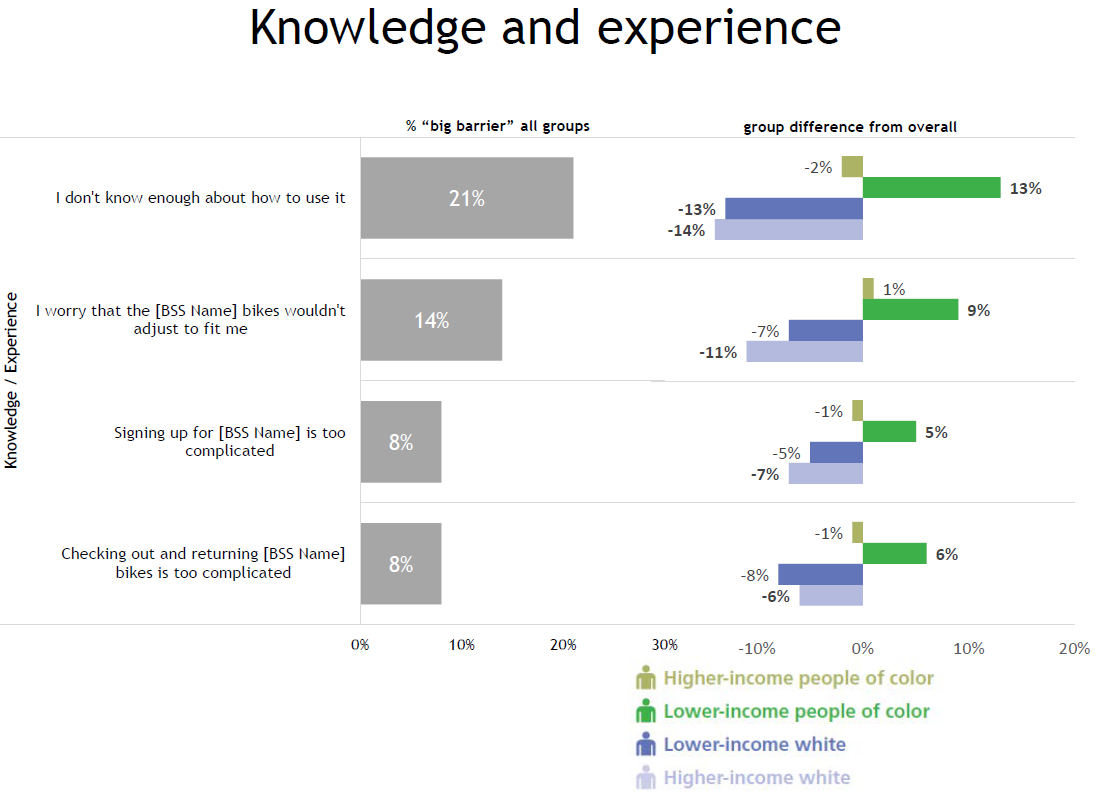
*BSS = bike share system
Source: Portland State University TREC center.
We’ll cover more about the perceived cost and liability concerns that impact intention to use bike share in a later post in this series.
Social circles are essential to increasing bike share ridership
It’s important to remember that social factors have a lot to do with whether residents adopt bike share, particularly residents of color.
Source: Portland State University TREC center.
“The vast majority of folks knew friends or family who had used bike share,” said McNeil, referring to those more familiar with bike share. “If you do know people who use it, that starts to seem more reasonably like something you could or would do.”
He notes that in particular, those who had spoken with someone at a local community center or bike share center were much more likely to tell the researchers that they actually intended to use bike share.
“We didn’t find that many people that had actually had that kind of personal contact,” said McNeil, noting the challenge of talking to many individuals in person. “Social factors were a bigger pull for people of color, especially lower-income people of color.”
The results are consistent with other studies that show social factors and family as a strong pull toward biking among Latino residents.
In following posts, we’ll cover the recurring issue of traffic safety, concerns over perceived bike share cost and liability, and the questions that remain to be answered by future bike share research.
Read the rest of the series:
>Bike share study shows need for infrastructure is clearer than ever
>Study says look at price and incentives to get low-income residents on bike share
>Researchers investigate where to look next in bike share studies
The Better Bike Share Partnership is funded by The JPB Foundation as a collaborative between the City of Philadelphia, the Bicycle Coalition of Greater Philadelphia, the National Association of City Transportation Officials (NACTO) and the PeopleForBikes Foundation to build equitable and replicable bike share systems. Follow us on Facebook, Twitter and Instagram or sign up for our weekly newsletter. Story tip? Write stefani@betterbikeshare.org.
Save

